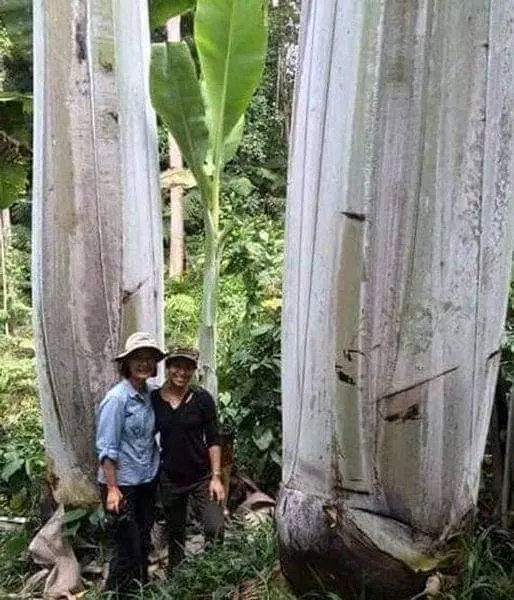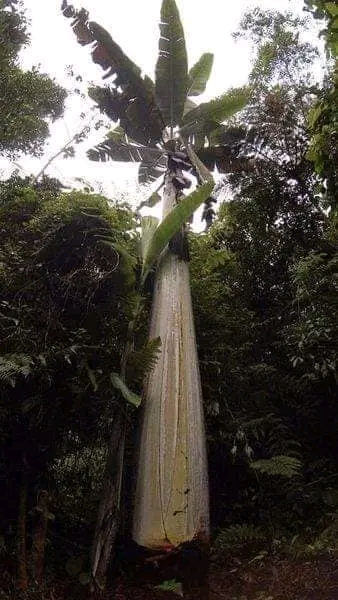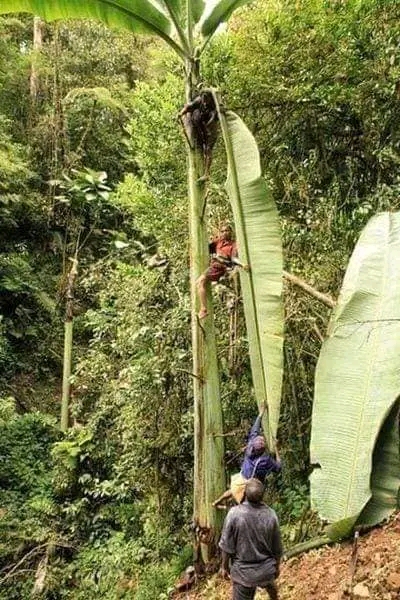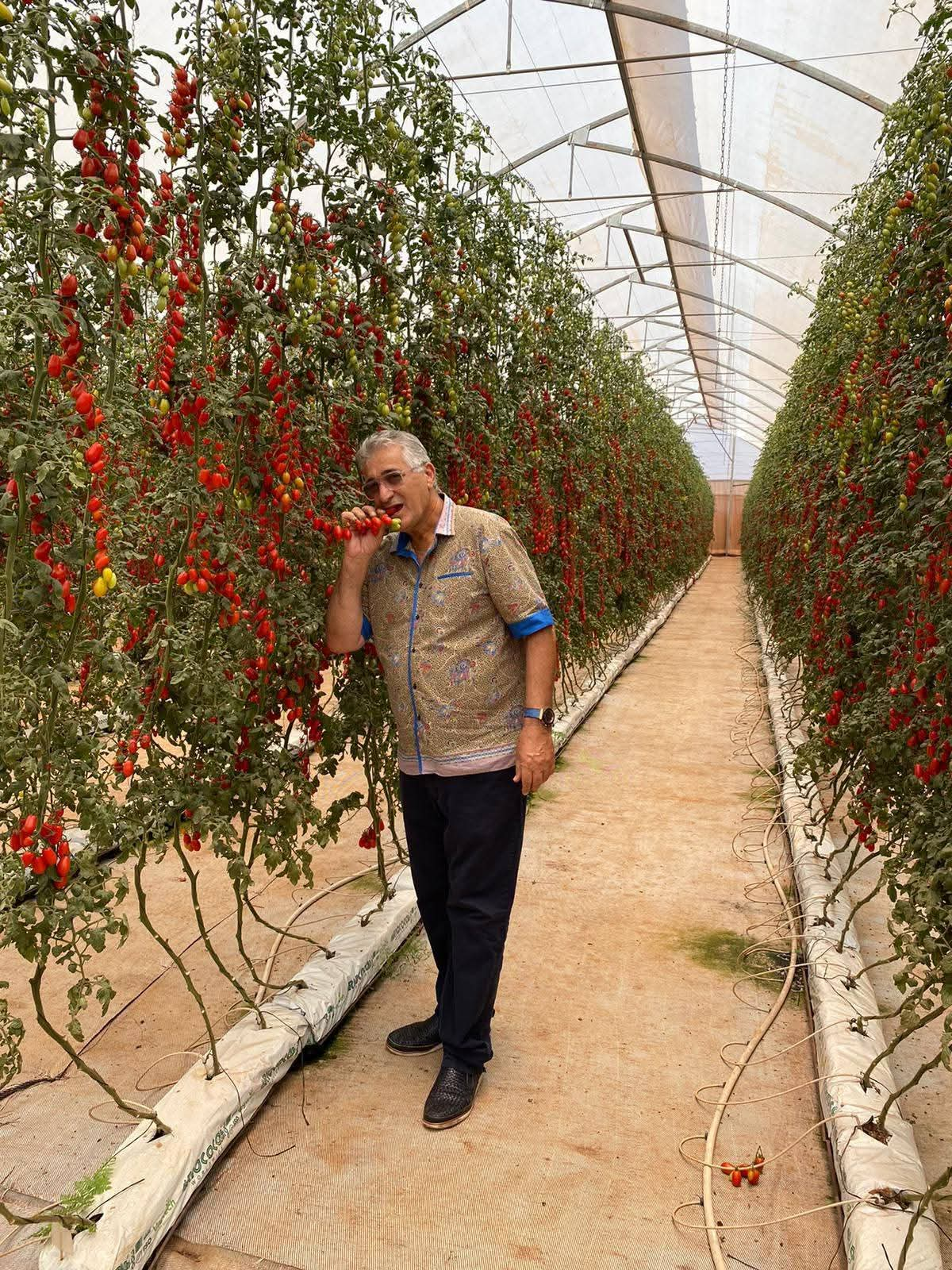By Burnett Munthali
In the lush and diverse landscapes of Papua New Guinea, a remarkable botanical marvel has garnered international attention: the world’s largest banana tree. This extraordinary plant, distinguished by its impressive size and striking characteristics, is captivating researchers and nature enthusiasts alike.

The largest banana tree in the world, located in Papua New Guinea, is a sight to behold. Notably, the leaves of this massive plant can grow up to 2.5 meters in length, showcasing the impressive scale of this botanical giant. The sheer size of the leaves contributes to the tree’s grand appearance and is a testament to the unique growing conditions in the region.
In addition to its colossal leaves, the banana tree produces bananas that are astonishingly large. Ripe bananas from this tree are reported to be as big as a newborn baby, far exceeding the size of typical bananas found elsewhere. This remarkable fruit size adds to the tree’s distinction and highlights the exceptional growth potential of bananas in Papua New Guinea’s environment.

The discovery of such a large banana tree has significant implications for botanical research and agricultural studies. Scientists and researchers are keenly interested in understanding the environmental factors, genetic attributes, and cultivation techniques that contribute to the tree’s extraordinary size and fruit production. The tree serves as a valuable subject for studying plant growth and development under unique conditions.
For the local communities in Papua New Guinea, the world’s largest banana tree is not just a natural wonder but also a source of pride. The tree’s existence underscores the rich biodiversity of the region and the potential for cultivating exceptional plant varieties. Additionally, such unique agricultural features can have potential economic benefits by attracting tourists and researchers, thus boosting local economies.

In , the world’s largest banana tree in Papua New Guinea stands as a testament to the remarkable natural phenomena that occur in the region. With its enormous leaves and exceptionally large bananas, the tree captures the imagination of those who encounter it and provides valuable insights into plant growth and agriculture. As interest in this botanical marvel grows, it offers exciting opportunities for research and highlights the incredible diversity of the natural world




